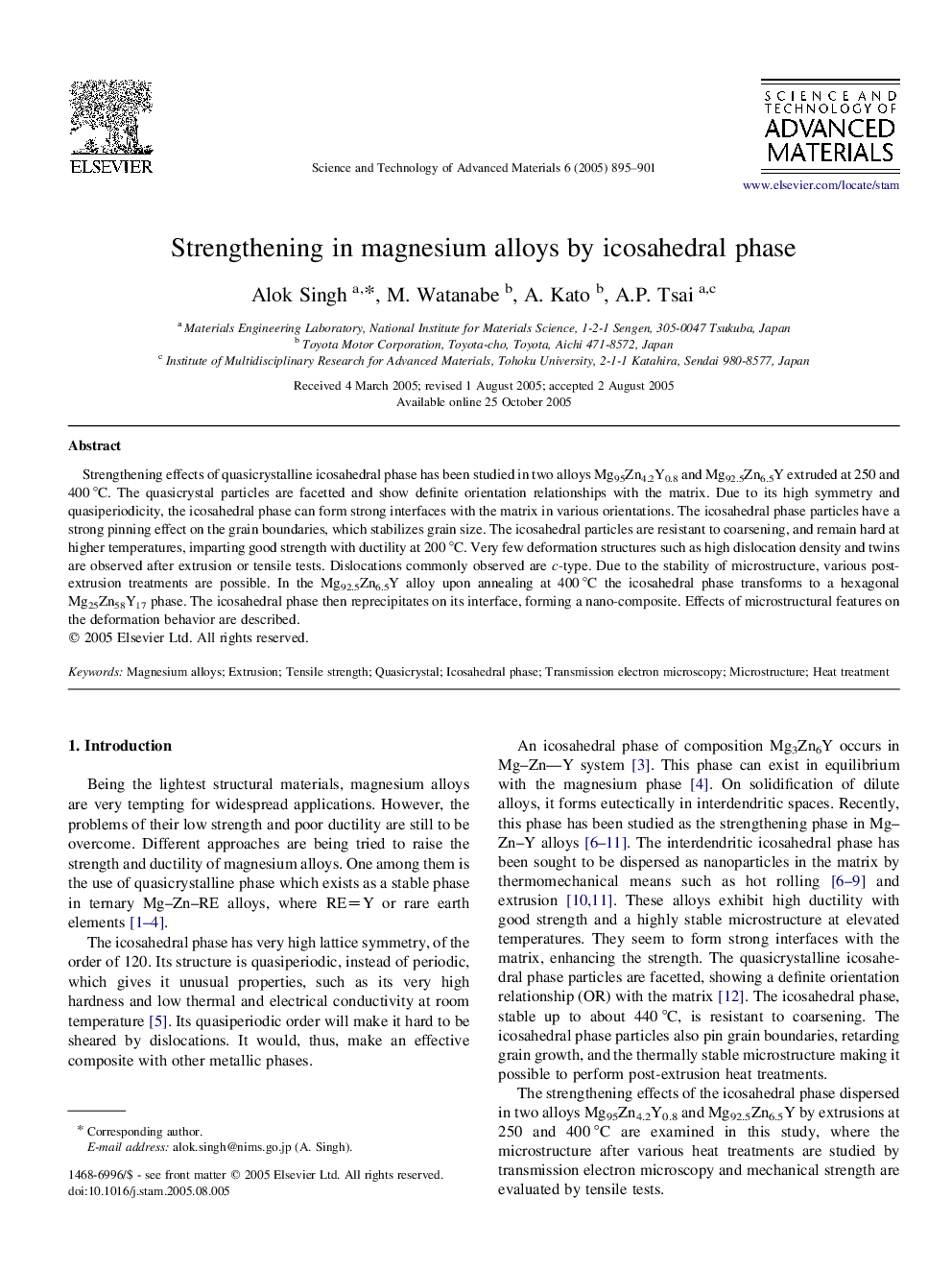| Article ID | Journal | Published Year | Pages | File Type |
|---|---|---|---|---|
| 9801296 | Science and Technology of Advanced Materials | 2005 | 7 Pages |
Abstract
Strengthening effects of quasicrystalline icosahedral phase has been studied in two alloys Mg95Zn4.2Y0.8 and Mg92.5Zn6.5Y extruded at 250 and 400 °C. The quasicrystal particles are facetted and show definite orientation relationships with the matrix. Due to its high symmetry and quasiperiodicity, the icosahedral phase can form strong interfaces with the matrix in various orientations. The icosahedral phase particles have a strong pinning effect on the grain boundaries, which stabilizes grain size. The icosahedral particles are resistant to coarsening, and remain hard at higher temperatures, imparting good strength with ductility at 200 °C. Very few deformation structures such as high dislocation density and twins are observed after extrusion or tensile tests. Dislocations commonly observed are c-type. Due to the stability of microstructure, various post-extrusion treatments are possible. In the Mg92.5Zn6.5Y alloy upon annealing at 400 °C the icosahedral phase transforms to a hexagonal Mg25Zn58Y17 phase. The icosahedral phase then reprecipitates on its interface, forming a nano-composite. Effects of microstructural features on the deformation behavior are described.
Keywords
Related Topics
Physical Sciences and Engineering
Materials Science
Materials Science (General)
Authors
Alok Singh, M. Watanabe, A. Kato, A.P. Tsai,
